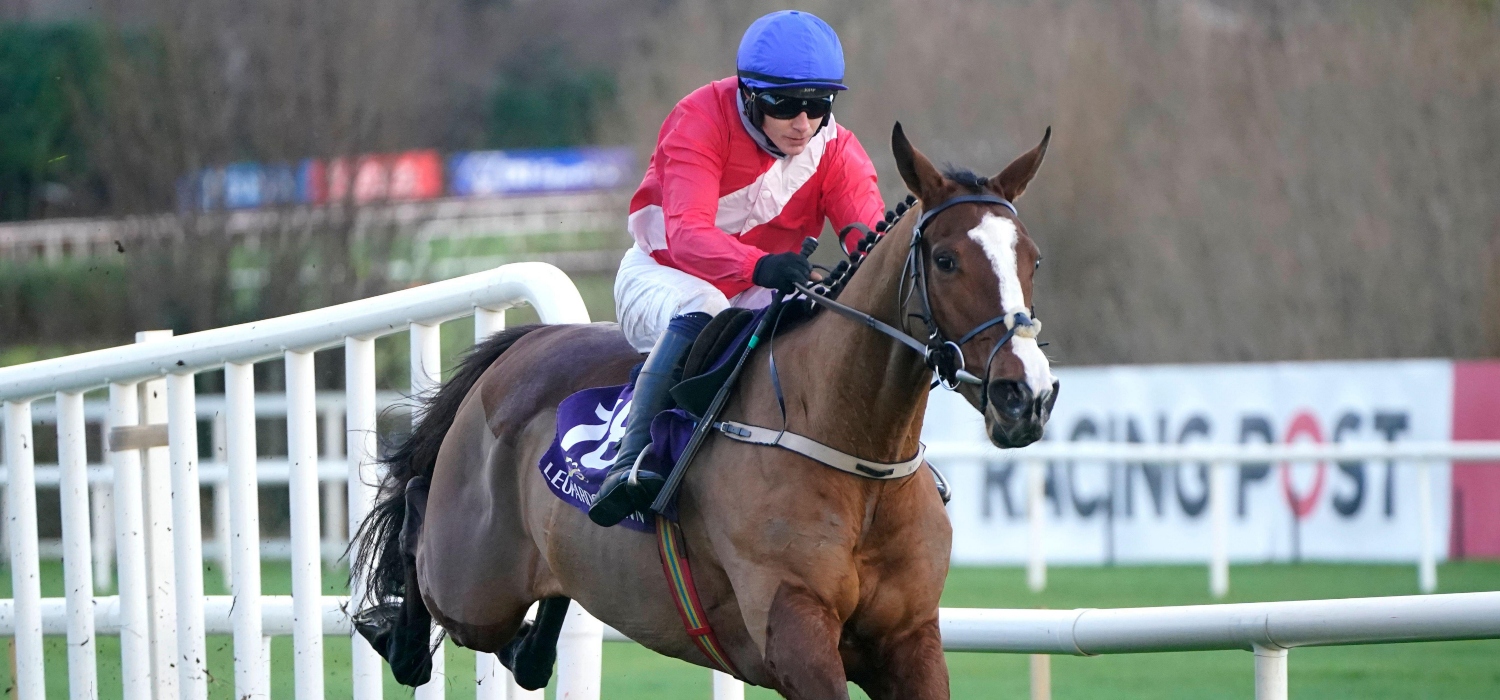
Cheltenham Trends analyst Matt Tombs is back with his third Insights article. This week, he takes a look at the novice hurdle division.
The Tempo Of The Races – Supreme or Ballymore Horse?
The near 5-furlong difference between the distances of the Supreme and Ballymore is misleading. Whilst every renewal needs looking at individually, they usually go a strong gallop from the start in the Supreme. The roar, the adrenalin flowing through the jockeys and the downhill run leads to a hard pace from the off, (this assumes last year’s tiny field of 8 was a Covid-related one-off).
By contrast in the Ballymore they begin in the quiet of the centre of the course. Jockeys are more relaxed, there is a long sweeping bend and a hurdle comes up quite quickly once they reach the racecourse proper. They tend to go steadily.
This means they are more similar tests of overall stamina than the race distances suggest – but suit different types. In the Supreme you need a high cruising speed, to jump well and stay the trip strongly. In the Ballymore you need to settle, it’s more forgiving of novicey jumping and you need a turn of foot.
The relentless gallop Dysart Dynamo set in the Moscow Flyer looks suited to the test in a Supreme. Stablemate Sir Gerhard was novicey at Leopardstown last time and given he settles pretty well the test in the Ballymore might suit him better.

Nicky Henderson prefers running his best horses in the Supreme which means both Constitution Hill and Jonbon (pictured) could be taking each other on
Experience Counts In Attritional Albert Bartlett
A golden rule of profiling races and/or using trends is that exceptional horses buck trends. Although they haven’t gone quite as strong a gallop in some recent renewals, the Albert Bartlett remains a really tough race. Lots of racecourse experience, especially over hurdles, has been a big advantage.
Winners have had (most recent last) 8-3-4-4-4-14-3-4-6-4-6-15-7-4-2-3-4 hurdles runs.
There’s a lot of chat about how the trend for winners having had lots of hurdles runs is breaking down, the theory being that better novices are running and can win with less hurdling experience. The horse that won off 2 runs was a future Gold Cup winner, Minella Indo and the recent winner after 3 runs was Monkfish who won the Broadway the following season and might be favourite for the Gold Cup if he hadn’t got injured. The previous winner off 3 runs was Broadway & Gold Cup winner Bobs Worth.
Horses that good win by outclassing their opposition but unless there’s a horse of that level running I think plenty of hurdling experience will remain a big positive. Bardenstown Lad is the unflashy, experienced (5 hurdles runs) type that gets underestimated in this.
A look at the 4 level-weights novice chases, how they've changed in recent years – and how punters need to adapt to those changes.
Hopefully some pointers to the value in the ante-post market
Good luck! https://t.co/0WnmKrHcTy
— Matt Tombs (@thespieler) February 8, 2022
Predictableness
The big field helter-skelter nature of the Supreme and Triumph used to produce plenty of long priced winners. That’s very different now with the much smaller fields.
8 of the last 11 Supreme winners have come from the front 3 in the market.
Since the Fred Winter was introduced 13 of the 17 Triumph winners have gone off single figure prices. They are fairly predictable races nowadays.
The steadier tempo of the Ballymore has long made it a predictable race, as there are fewer hard-luck stories – only 4 of the last 27 winners went off a double-figure price.
The Albert Bartlett has increasingly become a very unpredictable race. The attritional test is often very different to what the runners have faced previously and working out which horses will adapt to it is notoriously hard.
7 of the last 8 winners went off between 12.0 and 51.0.
It’s not a race I usually want to bet in ante-post as the winners don’t shorten and I’d want an unusually strong view to be backing one of the market leaders on the day.

 Bet Now
Bet Now
First And Second Strings
With the best horses in fewer and fewer hands now, establishing the value when trainers go mob-handed is important – Willie Mullins first and foremost. It’s necessary to understand what enables a trainer to establish a clear pecking order.
By way of example, in the Bumper the horses are so lightly raced it’s not surprising Willie doesn’t know which is his number one. On the last 13 occasions he’s had 2 or more runners and a clear first choice in the market, only once has the first choice performed best of his Bumper team. The value is invariably with his supposed lesser lights.
In the novice hurdles I think there is a difference between the Supreme & Ballymore, where Willie has long had a good record – and the Albert Bartlett, a race he’s only really started to get to grips with recently.
In the Supreme & Ballymore Willie knows his pecking order. In part that’s because he operates an ‘A-team’ approach of ensuring his best novices don’t take each other on, even if his two best novices are ideally suited by the same race.
In the 21 times he’s run more than 1 in those 2 races, his first string in the market has done best of his horses on 17 occasions.
He often used to just throw a lot of his B-teamers into the Albert Bartlett and the market found it hard to know how they’d fare. His first string in the market has done best of his team 5 times out of 9. I sense that’s changing but I’d still be less confident he knew his first string than in the Supreme or Ballymore.
Nicky Henderson has a different approach for his novice hurdlers. He has a history of running his best novice hurdlers in the Supreme even if they have to take each other on. 2 years ago Shishkin, Chantry House & Allart finished 135 when Nicky only had a 51.0 shot in the Ballymore.
He tends to know his pecking order – 10 of the 12 times this century Nicky’s had more than 1 runner in the Supreme, his first string in the market did best. Nicky soft trains some of his embryonic chasers in the Supreme, (Sprinter Sacre being an example,) and that often feeds into their starting prices. It’s worth following the vibes for which of Constitution Hill and Jonbon is seen as Nicky’s first string.

Constitution Hill’s graded form could still be under bet in the Supreme
Turning to a specific trend for each race:
Supreme
Most angles come from spotting something nuanced that others miss. Occasionally, obvious factors are under-bet. Grade 1 winning hurdlers are 8/29 this century (50% profit), 5 of those 8 winners coming in the last 9 years. It’s shaping into a strong renewal with several unbeaten hurdlers set to line up – history suggests that when assessing those different lines of form, the Grade 1 form of Constitution Hill and, if he runs, Sir Gerhard is liable to be under-bet.
Ballymore
The typically steady pace favours horses with a turn of foot and Grade 1 form at around 2m is a good guide. In the last 24 renewals Grade 1 hurdle winners at around 2m are 8/16 (86% profit). Grade 1 hurdle winners at 2m4f+ are 3/22 (66% loss) and those 3 include Envoi Allen who’d also won the Royal Bond over 2m and Bob Olinger last year when there wasn’t a runner with good Grade 1 form at 2m.
If he runs, there will be punters arguing that Ginto won the ‘best recent trial,’ the 2m4f Grade 1 at Naas, but to my eyes, he shapes like the sort of classy stayer who gets done for toe in the Ballymore. If Sir Gerhard runs, his turn of foot would be a potent weapon.
Albert Bartlett
Many punters like to back horses in staying races at the Festival that are stepping up in trip, having been impressive at shorter. That’s perhaps more the case in the Albert Bartlett than any other race as 3m novice hurdles are unfashionable races. Horses running in them over the winter tend to get dismissed as slow old boats.
In fact horses that had won a graded hurdle at 3m+ are 6/41 (120% profit). You should never take these sorts of trends literally – it’s the principle that matters. The distance of the Grade 2 at Limerick at Christmas that has produced 4 Albert Bartlett winners has been reduced slightly to 2m7f but often run on heavy ground, it’s a proper staying test. Eric Bloodaxe looks the type to go well at a big price if the ground comes up soft.
Ryanair Chase Preview ✈️
Our 𝗖𝗵𝗲𝗹𝘁𝗲𝗻𝗵𝗮𝗺 𝗔𝗻𝘁𝗲-𝗣𝗼𝘀𝘁 series continues as @thespieler joins @DanielHussey2 & @mdeasy85 once again 🐎
Matt makes the case that Mister Fisher might be overpriced, given the race might cut up 👀
𝗪𝗮𝘁𝗰𝗵: https://t.co/Nl1w4F5e5d 📺 pic.twitter.com/bUJljqIuqT
— Matchbook Betting Exchange (@TeamMatchbook) February 15, 2022
Triumph
Assessing how horses will progress during the season is obviously an important element in ante-post punting. It’s especially important with juveniles who can change so much physically during the season (it’s not uncommon for those physical changes to cause regression). I place more value on recent form in this division – last season Zanahiyr produced a seemingly stellar performance in the autumn, which turned out to be misleading.
Since the introduction of the Fred Winter changed the Triumph in 2005, unbeaten hurdlers who have won a graded hurdle since the turn of the year are 8/21 (148% profit). Even though he’s challenging for favouritism in the ante-post market Pied Piper may still be under-bet.
Dawn Run
There have only been 6 renewals so the profile of the race is still building. So far they’ve tended to go a decent gallop and horses held up off the pace have been winning. Experience has been key in a tough race – 4 winners were second season novices and every winner had made their hurdling debut by the end of August. That favours Allegorie De Vassy & Party Central over Dinoblue & Brandy Love.
Check out Matt’s other two Cheltenham Trends articles looking at the Championship Races and Novice Chases.
Watch Our Latest Cheltenham Ante-Post Preview:
Subscribe to the Matchbook Betting Podcast here
Subscribe to the Matchbook YouTube Channel here
Check out our Cheltenham YouTube Playlist here







